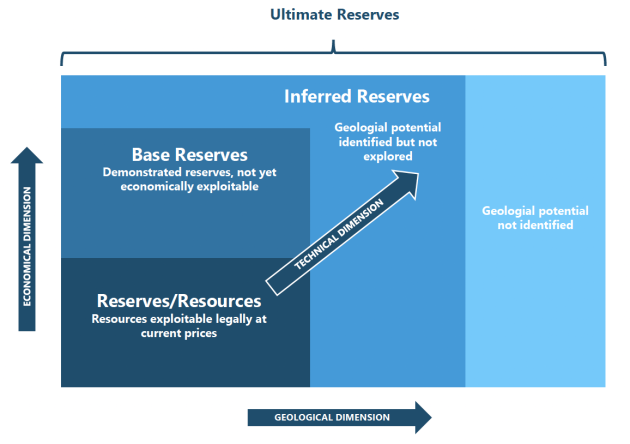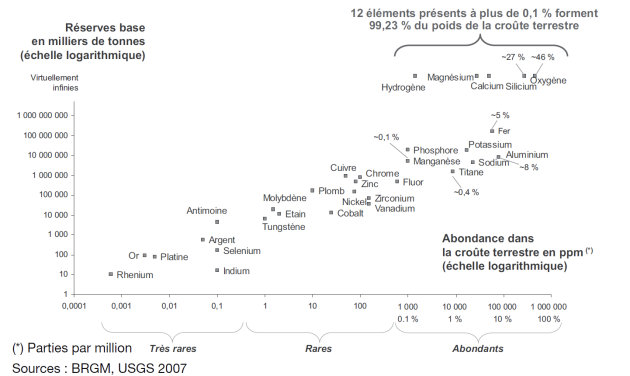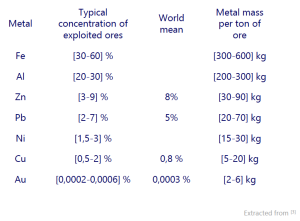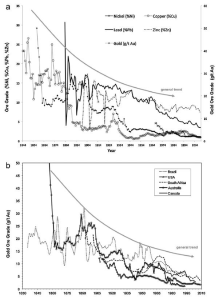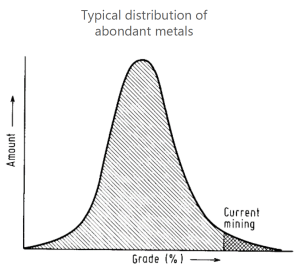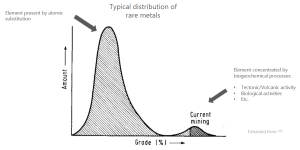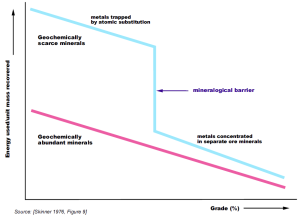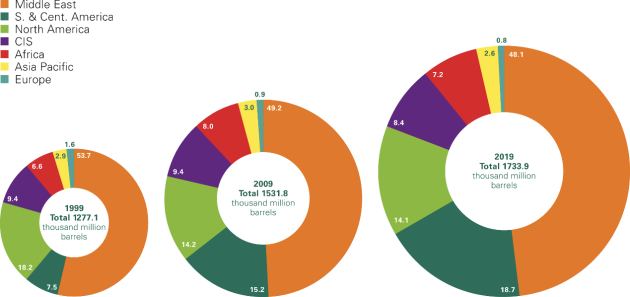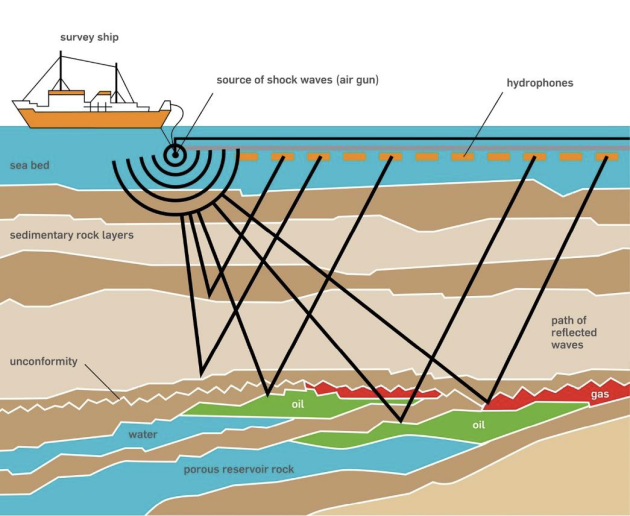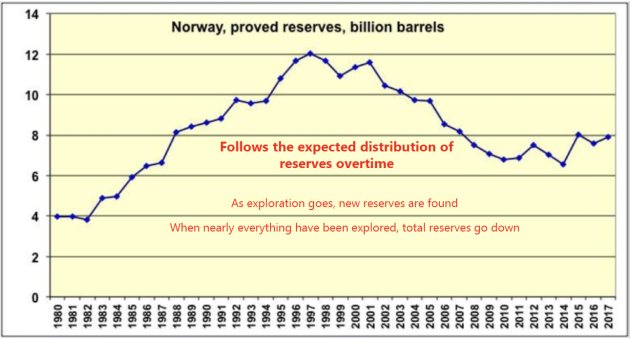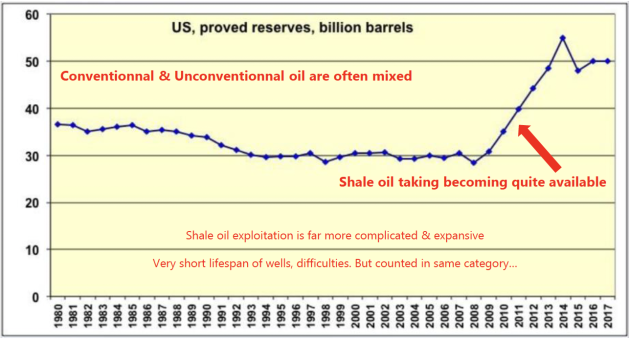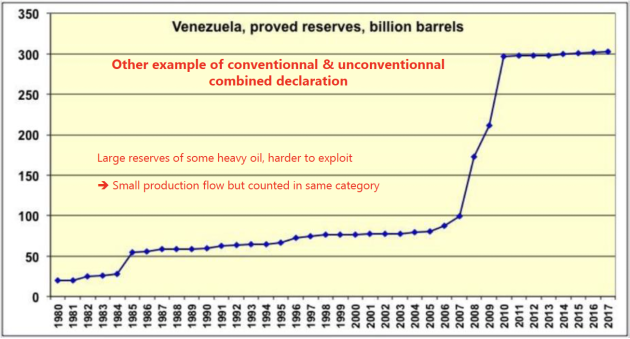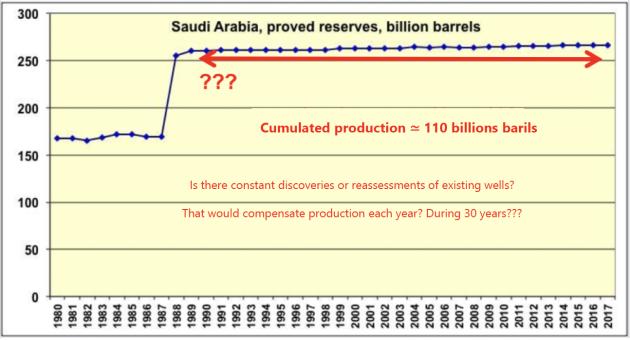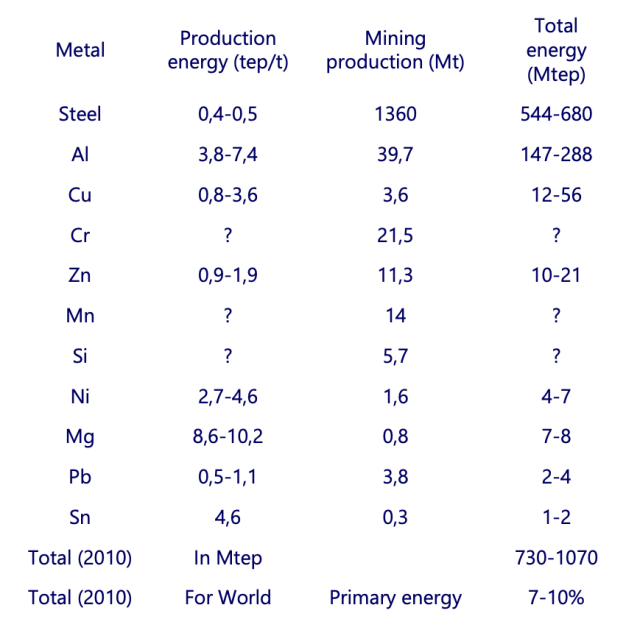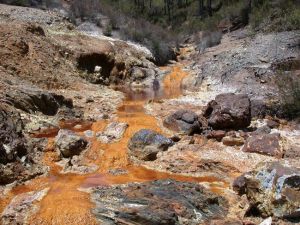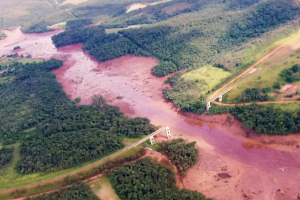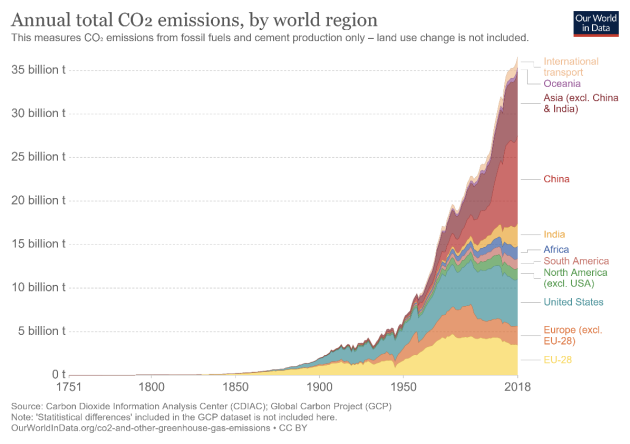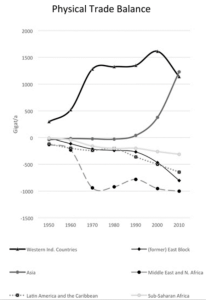Extraction of abiotic resources
Reserves
Definitions
Metals focus
Concentrations
Mineralogical wall
Oil focus
Assessing reserves
Caution in interpretation
Impacts of extractive activities
Growing interdependancies
Energy footprint of minerals
Material footprint of energy
Environmental focus
Other abiotic resources: water & air quality
Biotic resources: wildlife and land
Socio-economical focus
Contrasted local realities
Global frictions…
Rootedin historical inequalities
Reserves
Adaptated from [3]
[3] BIHOUIX, P., GUILLEBON, B. ,2010. Quel futur pour les métaux?
[11] USGS, 2014. Estimate of Undiscovered Copper Resources of the World[online]. Fact Sheet.
[12] USGS, 2020. Mineral Commodity Summaries[online].
Reserves/Resources data are highly dynamic
May be reduced as
ore is mined
feasibility of extraction diminishes
May increase as
additionnal deposits are discovered
currently exploited deposits are thoroughly explored
The Copper example : [11] & [12]
Reserves/Resources≃500 Mt (2014) -> 870 Mt (2020)
InferredReserves≃2.1 Bt(2014)
UltimateReserves≃3.5 Bt(2014)
Metals focus
[3] BIHOUIX, P., GUILLEBON, B. ,2010. Quel futur pour les métaux?
Concentration of minerals
Extracted from [3]
Average concentrations of minerals in Earth crust must be compared to typical concentrations in exploited ores
Even for abondant elements, high ratio between economically viable concentrations and Earth crust average
Iron(Fe) example: 30-60 % in ores versus 5 % average in Earth crust
Precious metals are logically the only ones where the order of magnitude is equivalent
Typical example: Gold (Au)
[24] PRIOR, T et al., 2012. Resource depletion, peak minerals and the implications for sustainable resource management.
B. Mineralogical barrier
Abondant metals mining follows a simple curve :
Highest-grade ores are mined first, as they’re the most available ones–technically and economically
Like for any finite resources, mining depletes stocks, then target less high-grade ores, until a production peak happen, after what availability diminishes
Extracted from [13]
Scarce metals are usually not found in common rocks as separate minerals but as atoms substitutions (that’s makes them rare)
Consequently, mining activities directly seek concentrated ores (geologically rarer themselves), then must rely on more common ores, following a bimodal mining curve
Extracted from [13]
[13] SKINNER, B.J., 1979. Chapter 10 A Second Iron Age Ahead? In: Studies in Environmental Science. [14] AYRES, Robert U, 2001. Resources, Scarcity, Growth and the Environment. . 2001. P.35.
Oil focus
Assessing reserves [15]
Extracted from [6]
[6] BP, 2020. BP Statistical Review of World Energy. [online].
[15] JANCOVICI, Jean-Marc, 2019. Les Energies fossiles. Ecole des Mines [online].
When a potential reserve of oil is suspected, sismography combined with exploratory drilling is used to estimate :
Quantities of oil
Probable recovery rate of the oil
As any oil extraction needs heavy infrastructure -> CAPEX>>OPEX.
Which means the dynamics of a specific reserve are :
Strongly dependent on quantities& recovery rates estimations accuracy
Weakly dependent of variations in oil price (infrastructure already there)
Who evaluate & declare the reserves?
A lot of oil companies are state-owned. Around 10% of oil compagnies are listed on the stock exchange -> legally binded to communicate the estimations
Large part of data comes from countries but :
Geopolitical strategies due to production international agreements
Different conventions on what to count and in which category
No independent verifications
Caution in interpretation
Medias
Impacts of extractive activities
Growing interdependancies
Energy footprint of minerals
A lot of operations involved
Extraction, mineral processing, metal working
1st order transformation: smelting and refining
Transport between steps
This raw metal undergo varied 2nd order transformations to become raw products with diverging final energetical footprint
Copper example: tubes 20-30% higher footprint than foils
Uncertainties in data
Diversity of production sites (mineral concentration, efficiency of processes)
Varied studies perimeter (no standard approach, weigh of hypothesis)
Disparities in sources of information available
Extracted from [3]
Extraction & Refining of metals
Less & less concentrated mineral resources -> more & more energy
Extracted from [24]
[24] PRIOR, T et al., 2012. Resource depletion, peak minerals and the implications for sustainable resource management.
Material footprint of energy
Extraction & Refining of oil
≃5% of world Steel use for gas/oil exploration & production
‘Offshore’, ‘Depp offshore’, or
Unconventionnal oil -> rise in the use of platforms, ships, complex tools, etc.
Even « Renewable energies » are quite materially dependent:
A 1MW windmill contains ≃ 3t of Cu, and needs 10x more steel & concrete per kWh than a classical plant
A classical PV installation (Si) needs ≃ 4kg of Cu per kW capacity.
Most these technologies also need rare metals like In, Ga, Se, Ne, etc.
Environmental focus
Other abiotic resources: water & air quality
Impacts on abiotic resources: water & air quality [16] & [17]
[16] ELAW, 2010. 1st Edition: Guide pour l’évaluationde EIE de projetsminiers [online].
[17] Hydraulic Fracturing 101. Earthworks [online].
[3] BIHOUIX, P., GUILLEBON, B. ,2010. Quel futur pour les métaux?
Mines dewatering
Mining sometimes directly meet the groundwater table -> pursuit of mining need pumping of water -> reduction or elimination of water circulation in surrounding zones, varied degradations on soils and wildlife
Ex: Sadiola Gold mine pumped 5,6 Mm3 of water in a year (≃ consommation of 800 000 Malians) [3]
Mobile or non-mobile sources of air pollutants
Fuel combustion & exhaust gases of machines or vehicules -> CO2, CO, organic compounds -> climate change
Waste particles dispersed by wind
Precious metals are often melted onsite before sent to rafineries -> high levels of Hg, As, SO2
Uncontrolled mercury (Hg) rejections
[Hg] in ores can rach 10 mg/kg -> 1 Mt of ores produced means 10t of Hg potentially emitted
Vaporization of Hg in gold metling is a major cause of Hg mission in atmosphere
Specifics to oil :
Hydraulic fracturing & Oil spills contaminations
Details in [17]
Biotic resources: wildlife and land
[16] ELAW, 2010. 1st Edition: Guide pour l’évaluationde EIE de projetsminiers [online].
[17] Hydraulic Fracturing 101. Earthworks [online].
Loss of habitat
Excavation or accumulation of waste -> mobile species (birds and some mammals)are hunted out + sedentary species (little mammals, reptiles, invertebrates) are killed
Acid drainage or dewatering -> severes impacts on surrounding aquatic life
These 2 points -> perturbation of trophic chains (diminution of food for the higher- level predators)
Disparition of vegetation
Fracture of habitat
Large portions of land occupied
-> perturbation of migrations or local isolation of species
Specifics to oil (again):
Hydraulic fracturing & Oil spills contaminations
Details in [17]
Socio-economical focus
[16] ELAW, 2010. 1st Edition: Guide pour l’évaluationde EIE de projetsminiers [online].
[17] Hydraulic Fracturing 101. Earthworks [online].
[3] BIHOUIX, P., GUILLEBON, B. ,2010. Quel futur pour les métaux?
Contrasted local realities
[16] ELAW, 2010. 1st Edition: Guide pour l’évaluation de EIE de projets miniers [online].
[17] Hydraulic Fracturing 101. Earthworks [online].
[3] BIHOUIX, P., GUILLEBON, B. ,2010. Quel futur pour les métaux?
Human migrations
Displacement & reinstallation of communities (expropriated or not) -> resentment + power perturbations -> local conflicts
New high economic activity -> arrival of new populations -> new pressures on land, water or waste management -> tensions & potential conflicts with original inhabitants
Ex of Grasberg Mines in Indonesia: From <1000 (1973) to 110 000 (1999) ; violent conflicts during 1970-1990
New needs of infrastructures -> urbanization -> wide-ranging effects
Loss of drinkable water access
Due to uncontrolled exploitations & industrial pollutions
Pressures on means of existence
Mining activities not correctly managed -> economic cost on other sectors (agriculture & fishing in particular)
Public health consequences
Potential sanitary risks are often seglected
-> example of improvised mining towns are been shown to threaten food security and availability
Indirect effects of exposition to mining activities are higher incidences of tuberculosis, asthma, chronic bronchitis, etc.
A review of metals direct toxicity impacts can be found in a dedicated chapter of [3]
Cultural & Esthetics
Destruction of cultural resource by surface perturbation or excavation
To pographical or hydrological changes
Higher access to previously inacessible locations
-> theft or vandalism of cultural artifacts
Visual impacts due to deforestation& presence of infrastructures
Global frictions...
[25] HUISMAN, J., PAVEL, C., et al. 2020. Critical Raw Materials in Technologies and Sectors -Foresight [online].
[3] BIHOUIX, P., GUILLEBON, B. ,2010. Quel futur pour les métaux?
Emerging geopolitical stakes for metals
As for oil, the main consumer countries are also the ones with the smallest reserves
Understanding of these problematics is more recent for metals and is parallel to the recent rise of metals prices in the 2000s
The EU Commission now regurlaly pubish reports on the matter[25]
Strategical stocks of metals constituted during Cold War, dismantled after the 90s, are back since15-20 years
Capitalistic concentration of compagnies :
in 2008, 4173 compagnies in mining but 149 majors (3,6%) were controlling 83% of the market[3]
Power to initiate struggles with states over natural resources and their exploitation, in order to maximize private profits and mutualize losses or environmental externalities
Complex conflicts with explicit and implicit actors
[3] BIHOUIX, P., GUILLEBON, B. ,2010. Quel futur pour les métaux?
Armed conflicts already existing
Not as visible as oil conflicts yet
DRC (Democratic Republic of the Congo) being the richer african country in metals, its history since mid-XXth is a paradigmatic example
Crossings with colonization & neocolonization
1961 Defense agreements between France, Niger, Dahomey & Ivory Coast garantee limitation of exportations to other countries than France in case of needs
2007 contract of China & RDC: heavy construction work (6 billions $) in in exchange of metal mining authorizations (10 Mt of Cu, 200 000 t of Co, 372 t of Au)
With explicit intention of asking land if the metal provisionning does not meet expectations
Direct implication in local economy
No need to developp on the well known history of oil geopolitical conflicts since mid-XXth!
Rooted in historical inequalities
[3] BIHOUIX, P., GUILLEBON, B. ,2010. Quel futur pour les métaux?
[18] RITCHIE, Hannah and ROSER, Max, 2017. CO₂ and Greenhouse Gas Emissions. Our World in Data[online].
[19] BONNEUIL, C., FRESSOZ, J-B., 2016. L’événement anthropocène: la Terre, l’histoire et nous.
20th century have mainly reorganized exploitation, but it continued on
USA based its economic rise on intensive use of its own resources during 1870-1940
Supported decolonization mainly to gain access to material resources of newly independant countries
Conversely, East block exploited its own environnment above all
Emerging trend ->
Reappropriations of national resources & path of developpmen
Setting of export restrictions [3]
